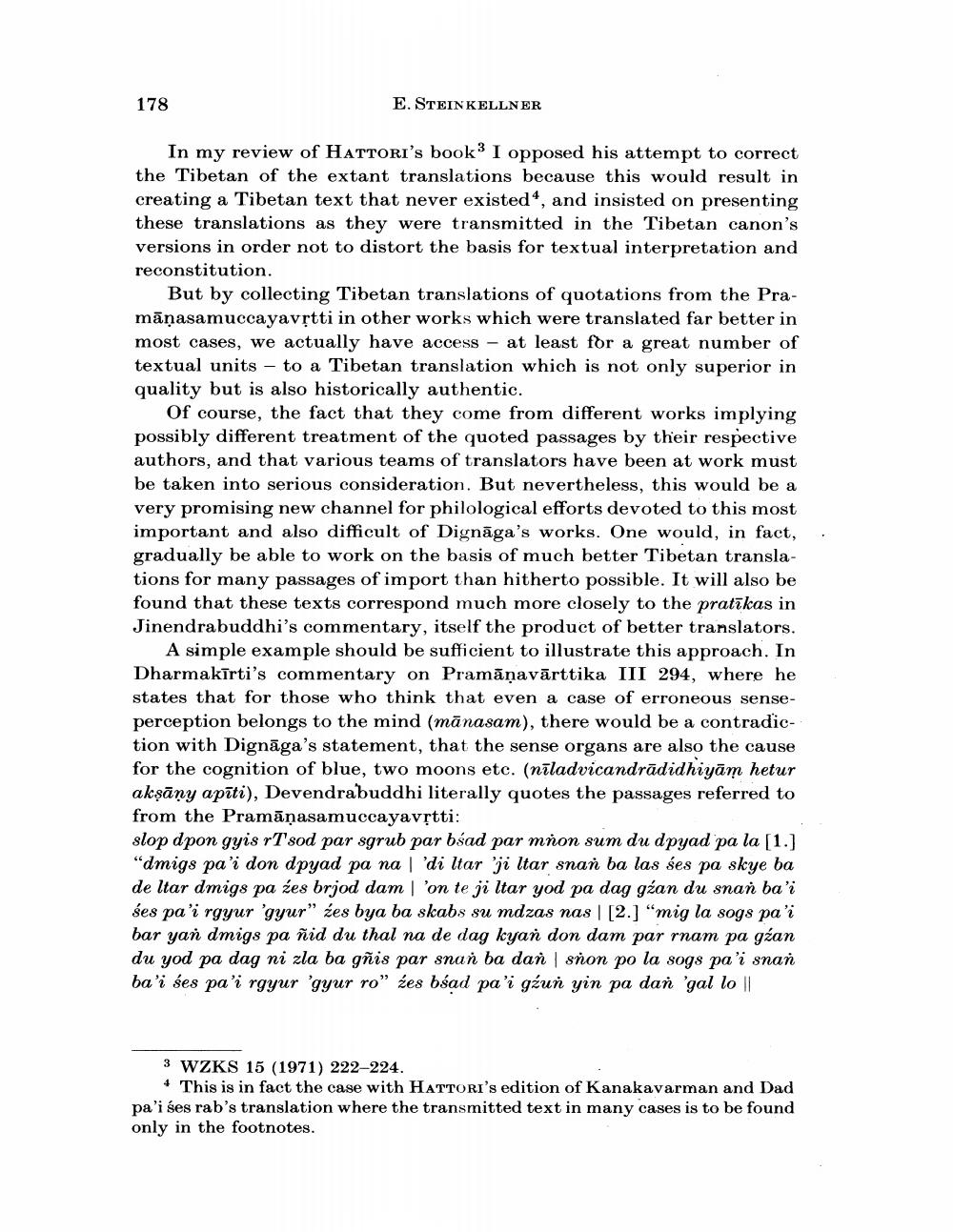Book Title: Miszellen Zur Erkenntnistheoretisch Logischen Schule Des Buddhismus Author(s): Ernst Steinkellner Publisher: Ernst Steinkellner View full book textPage 2
________________ 178 E. STEINKELLNER In my review of HATTORI's book? I opposed his attempt to correct the Tibetan of the extant translations because this would result in creating a Tibetan text that never existed", and insisted on presenting these translations as they were transmitted in the Tibetan canon's versions in order not to distort the basis for textual interpretation and reconstitution. But by collecting Tibetan translations of quotations from the Pramāṇasamuccayavrtti in other works which were translated far better in most cases, we actually have access - at least for a great number of textual units – to a Tibetan translation which is not only superior in quality but is also historically authentic. Of course, the fact that they come from different works implying possibly different treatment of the quoted passages by their respective authors, and that various teams of translators have been at work must be taken into serious consideration. But nevertheless, this would be a very promising new channel for philological efforts devoted to this most important and also difficult of Dignāga's works. One would, in fact, gradually be able to work on the basis of much better Tibetan translations for many passages of import than hitherto possible. It will also be found that these texts correspond much more closely to the pratīkas in Jinendrabuddhi's commentary, itself the product of better translators, A simple example should be sufficient to illustrate this approach. In Dharmakīrti's commentary on Pramāņavārttika III 294, where he states that for those who think that even a case of erroneous senseperception belongs to the mind (mānasam), there would be a contradiction with Dignāga's statement, that the sense organs are also the cause for the cognition of blue, two moons etc. (nīladvicandrādidhiyām hetur akşāny apīti), Devendrabuddhi literally quotes the passages referred to from the Pramāṇasamuccayavịtti: slop d pon gyis rTsod par sgrub par bśad par mnon sum du dpyad pa la [1.] "dmigs pa'i don dpyad pa na 'di ltar 'ji ltar snan ba las ses pa skye ba de ltar dmigs pa zes brjod dam | 'on te ji ltar yod pa dag gzan du snan ba'i śes pa'i rgyur 'gyur" zes bya ba skabs su mdzas nas | [2.) “mig la sogs pa'i bar yan dmigs pa ñid du thal na de dag kyan don dam par rnam pa géan du yod pa dag ni zla ba gñis par snan ba dan sñon po la sogs pa'i snan ba'i ses pa'i rgyur 'gyur ro" zes bśad pa'i gzun yin pa dan 'gal lo || 3 WZKS 15 (1971) 222-224. 4 This is in fact the case with HATTORI's edition of Kanakavarman and Dad pa'i ses rab's translation where the transmitted text in many cases is to be found only in the footnotes.Page Navigation
1 2 3 4 5
